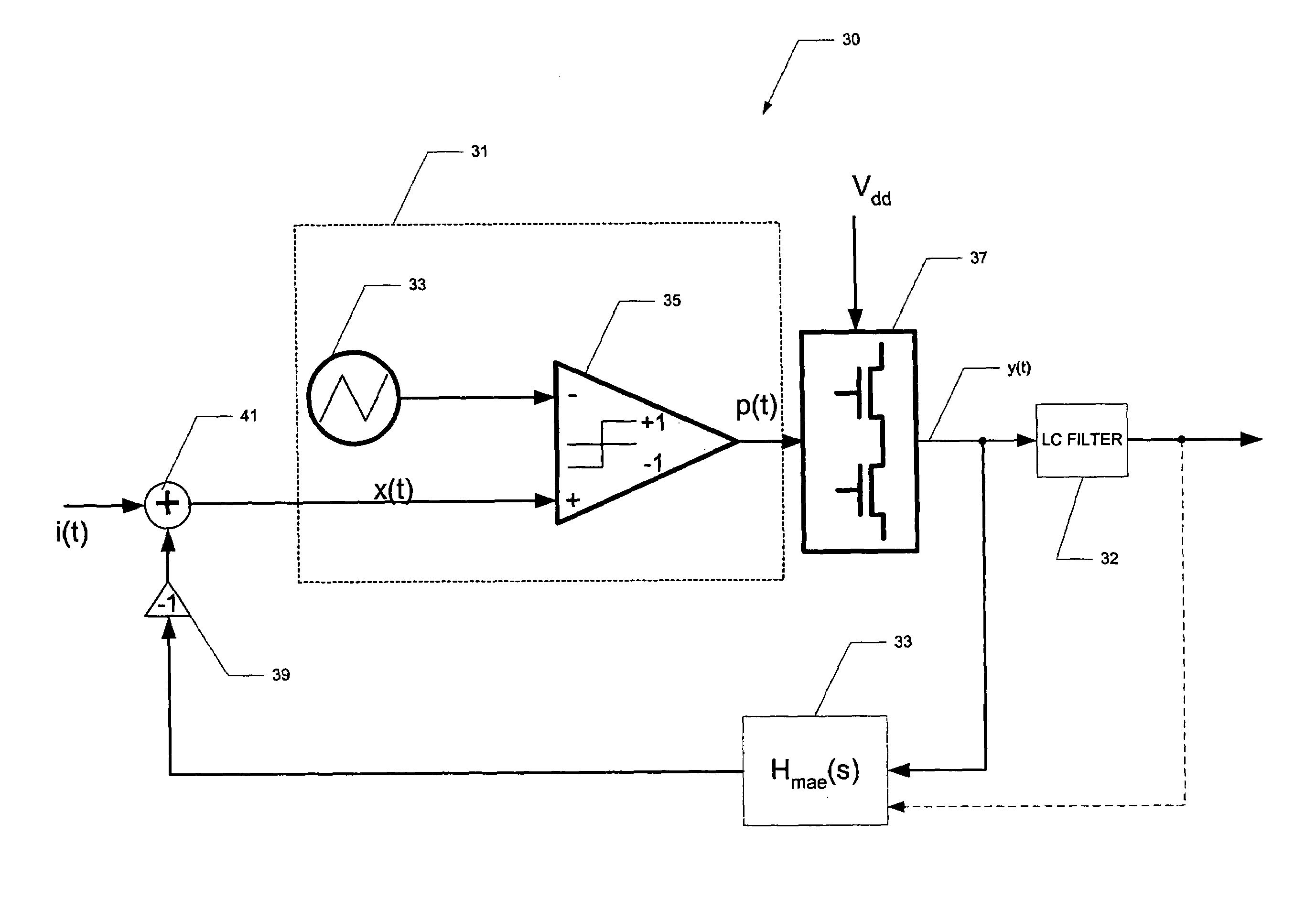Loop filter for class D amplifiers
a loop filter and amplifier technology, applied in the field of audio amplifiers, can solve the problems of deviation from theoretical behavior, non-idealities in the observed electrical performance of conventional natural sampling pwm modulator, and theoretically less efficient ab amplifiers, so as to reduce aliasing error and not decrease the stability of the loop filter
- Summary
- Abstract
- Description
- Claims
- Application Information
AI Technical Summary
Benefits of technology
Problems solved by technology
Method used
Image
Examples
Embodiment Construction
[0047]The present invention will be described in connection with its preferred embodiment, namely as implemented into an audio amplifier, because it is contemplated that this invention is especially beneficial in such an application. However, it is also contemplated that the benefits of this invention can also be attained in other applications, such as switching power supplies, and motor control drivers such as used in disk drives. Accordingly, it is to be understood that the following description is provided by way of example only, and is not intended to limit the true scope of this invention as claimed.
[0048]The present invention is based on certain observations regarding the operation of loop filters in class D amplifiers, such as the conventional feedback-controlled class D amplifier of FIG. 2. As mentioned above, high frequency components of the output signal p(t) from conventional PWM modulators will feed back to the input of the comparator of the PWM modulator itself. These h...
PUM
 Login to View More
Login to View More Abstract
Description
Claims
Application Information
 Login to View More
Login to View More - R&D
- Intellectual Property
- Life Sciences
- Materials
- Tech Scout
- Unparalleled Data Quality
- Higher Quality Content
- 60% Fewer Hallucinations
Browse by: Latest US Patents, China's latest patents, Technical Efficacy Thesaurus, Application Domain, Technology Topic, Popular Technical Reports.
© 2025 PatSnap. All rights reserved.Legal|Privacy policy|Modern Slavery Act Transparency Statement|Sitemap|About US| Contact US: help@patsnap.com



